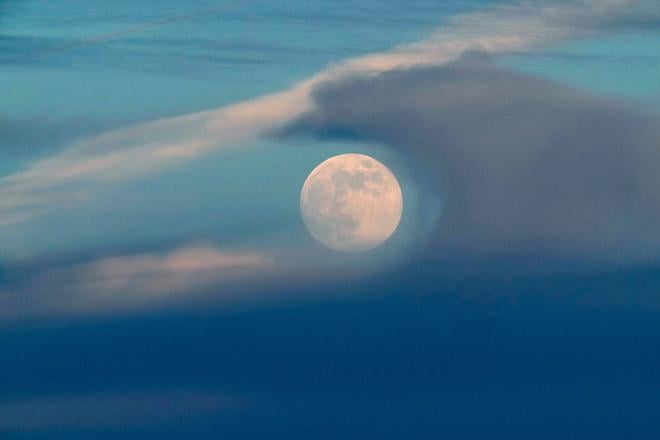On the night of Saturday/Sunday, April 12/13, skywatchers in Slovakia can look forward to the fourth full moon of 2025, known as a pink moon. It is also the first full moon after the spring equinox, which plays a key role in setting the date of Easter, which this year will be celebrated next weekend, from April 18 to 21.
Despite its name, the Pink Moon is not actually pink. The term originates from North America, where it was named after the pink wildflower phlox, which typically blooms around the same time each spring.
Sunday's full moon will also be a micromoon, meaning the Moon is near its furthest point (apogee) from Earth, making it appear smaller and dimmer than usual. It will reach its zenith over Slovakia at 02:22 on Sunday morning, with moonrise beginning at 20:29 on Saturday evening. If the skies remain clear, as is currently forecast by the Slovak Hydrometeorological Institute (SHMÚ), it should be easily visible.
Traditionally, this astronomical phenomenon is also referred to as a paschal moon, since it determines the date of Easter Sunday, which always falls on the Sunday after the first full moon of spring.
The next full moon, known as the flower moon, will occur on May 12.
While micromoons have long been linked to superstitions about mental health or natural disasters, scientific evidence does not support such claims. Still, it is a celestial event worth a glance – if only for its quiet beauty.


 On Sunday, a so-called micromoon will appear. It occurs when the Moon is near its furthest point from Earth. (source: TASR/AP)
On Sunday, a so-called micromoon will appear. It occurs when the Moon is near its furthest point from Earth. (source: TASR/AP)
 Phlox flowers, after which the April full moon is nicknamed the Pink Moon. (source: Pexels)
Phlox flowers, after which the April full moon is nicknamed the Pink Moon. (source: Pexels)